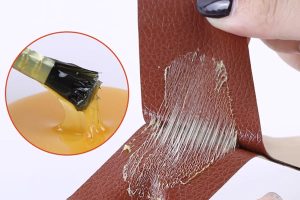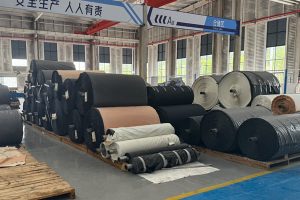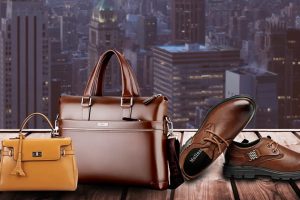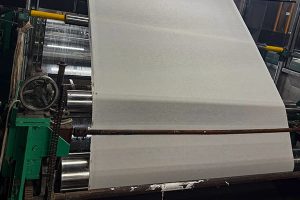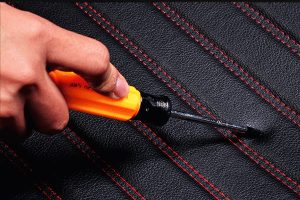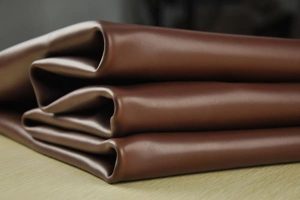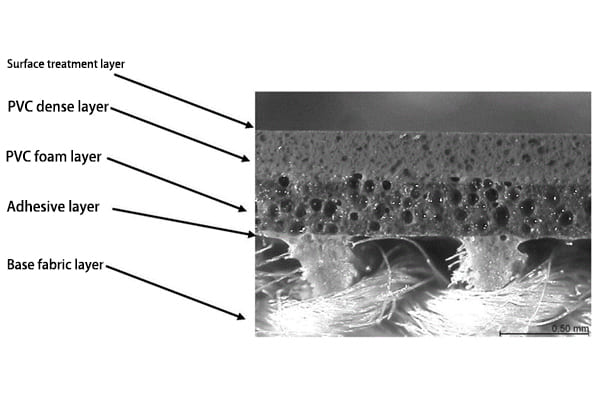
Let’s face it: leather is luxurious, but the price (and we don’t just mean financially) can be a bit steep. Enter synthetic leather—a material that looks like leather, feels like leather, but doesn’t come with the ethical or environmental baggage of real leather. Whether you’re eyeing that sleek “leather” jacket or wondering why your new car seats feel so posh, synthetic leather is likely the hero behind the scenes. But what exactly is this faux material, and how does it stack up against the real deal? Let’s dive into the world of synthetic leather and explore how this plastic-coated wonder is changing the fashion, furniture, and automotive game—without breaking the bank (or harming any cows).
Synthetic Leather 101: Breaking Down the Basics
Synthetic leather, also known as faux leather, is a man-made material designed to imitate the appearance and texture of real leather. It’s typically created by layering a plastic coating over a fabric base, resulting in a durable, leather-like material that’s often more affordable and easier to maintain than genuine leather. Synthetic leather has become a popular choice for fashion, upholstery, and automotive industries due to its versatility, cruelty-free nature, and resistance to stains and water. It comes in various finishes and qualities, allowing manufacturers to replicate the rich look of real leather without the ethical and environmental concerns tied to animal products.
From PVC to PU: Understanding Different Types of Synthetic Leather
Synthetic leather comes in several varieties, with PVC (polyvinyl chloride) and PU (polyurethane) being the most common types. PVC leather is made by applying a plastic layer to a fabric base, making it highly durable and resistant to water. However, the manufacturing process involves the use of toxic chemicals, which can raise environmental concerns. PU leather, on the other hand, is often seen as a more eco-friendly option. It involves applying a polyurethane coating to a base like polyester or cotton, resulting in a softer, more flexible material that mimics real leather more closely than PVC. PU is often preferred in fashion and furniture due to its breathability and closer resemblance to genuine leather, although it’s less durable than PVC.
How Synthetic Leather is Made: The Science Behind the Faux
The production of synthetic leather is a technological process that blends chemistry with precision engineering. It typically starts with a fabric base, such as cotton, polyester, or nylon, which provides flexibility and strength. The base fabric is then coated with a plastic layer—either PVC (polyvinyl chloride) or polyurethane (PU). In the case of PVC leather, the process involves adding plasticizers to PVC resin to make the material flexible and durable. In PU leather, the polyurethane is applied as a foam or liquid, creating a softer, more leather-like texture. The coated fabric is then embossed with a grain pattern to mimic the natural texture of real leather. The final product combines durability, water resistance, and a leather-like appearance, making it a popular choice across industries like fashion, automotive, and furniture manufacturing.
Eco-Friendly or Not? The Sustainability of Synthetic Leather
The environmental impact of synthetic leather is a subject of much debate. On the one hand, synthetic leather is often hailed as a vegan, cruelty-free alternative to genuine leather, eliminating the need for animal hides. However, the sustainability of synthetic leather depends heavily on the type of plastic used in its production. PVC leather is less eco-friendly because its manufacturing process releases harmful chemicals and produces non-biodegradable waste. PU leather, although considered more sustainable, still relies on petroleum-based plastics. However, advancements in production methods have led to the development of water-based PU and bio-based alternatives, which significantly reduce environmental impact by cutting down on toxic emissions and using renewable resources. As the demand for eco-friendly materials grows, the synthetic leather industry is evolving toward more sustainable practices, though it still has a way to go in terms of fully closing the environmental loop.
Synthetic Leather vs. Genuine Leather: What's the Difference?
While synthetic and genuine leather may look similar at first glance, there are significant differences between the two materials. Genuine leather is made from animal hides and undergoes tanning processes that can be environmentally taxing but result in a durable, breathable material that develops a unique patina over time. In contrast, synthetic leather is made from plastic coatings on a fabric base, offering a leather-like appearance without the ethical concerns of animal use. Synthetic leather tends to be more affordable, easier to clean, and resistant to water and stains, making it a popular choice for consumers seeking practicality. However, it lacks the natural aging process and breathability of genuine leather. In terms of environmental impact, genuine leather production can contribute to deforestation and high water usage, whereas synthetic leather involves plastics, which can pose sustainability challenges depending on the type and manufacturing process. Ultimately, the choice between the two depends on personal preferences for durability, ethics, and environmental considerations.
Conclusion: The Faux Leather Frontier—Style Without Compromise
Synthetic leather has come a long way from its humble beginnings as a cheap imitation of the real thing. Whether it’s the versatile PU or the durable PVC, synthetic leather offers a stylish, practical, and cruelty-free alternative that’s changing the way we think about leather goods. While it may not age like genuine leather, it more than makes up for it with affordability, easy maintenance, and the ability to keep your conscience clear. As innovation continues to push the boundaries of eco-friendly production, the future of synthetic leather looks bright—and just as sleek. So whether you’re dressing up your wardrobe or furnishing your home, synthetic leather proves that you don’t have to choose between luxury and ethics.


